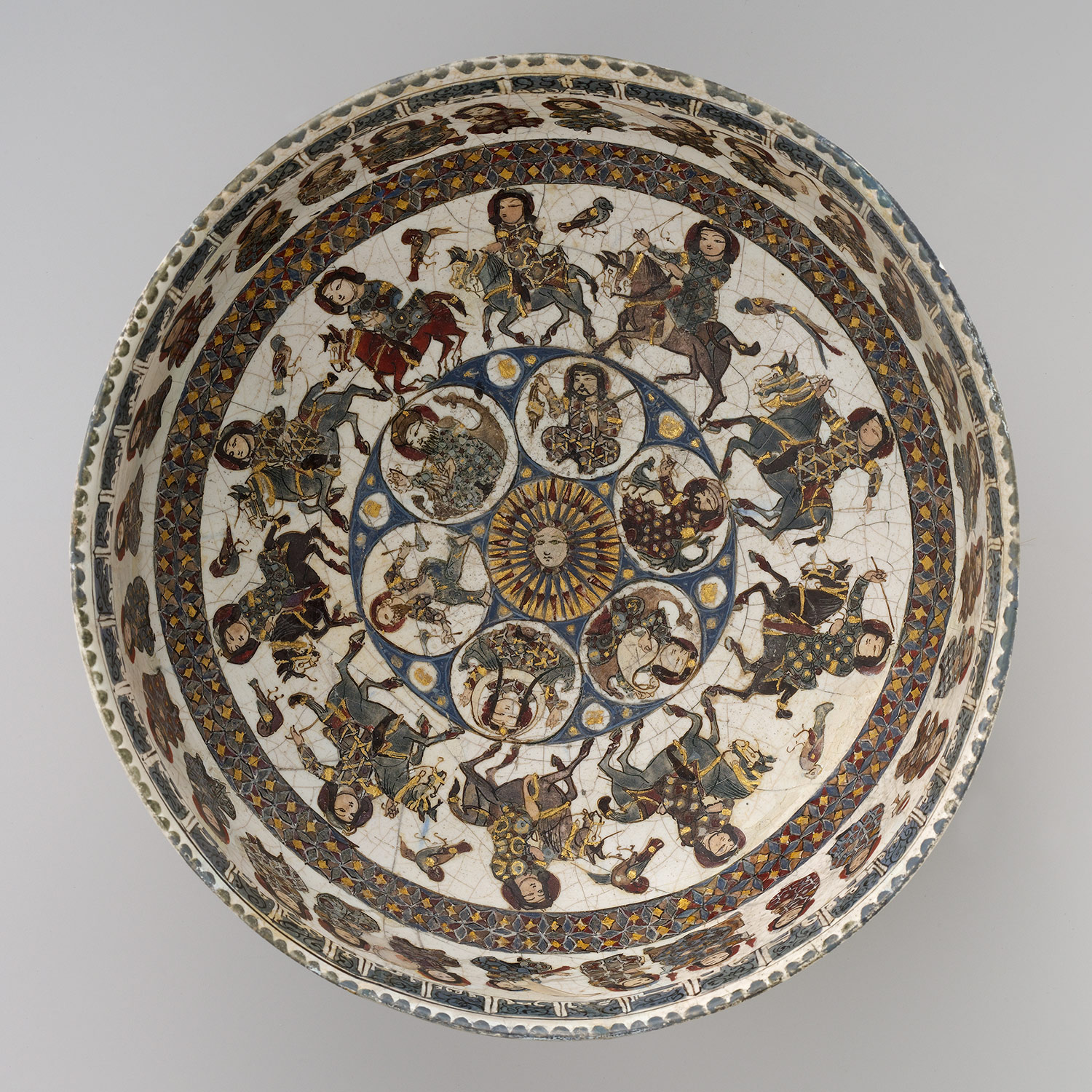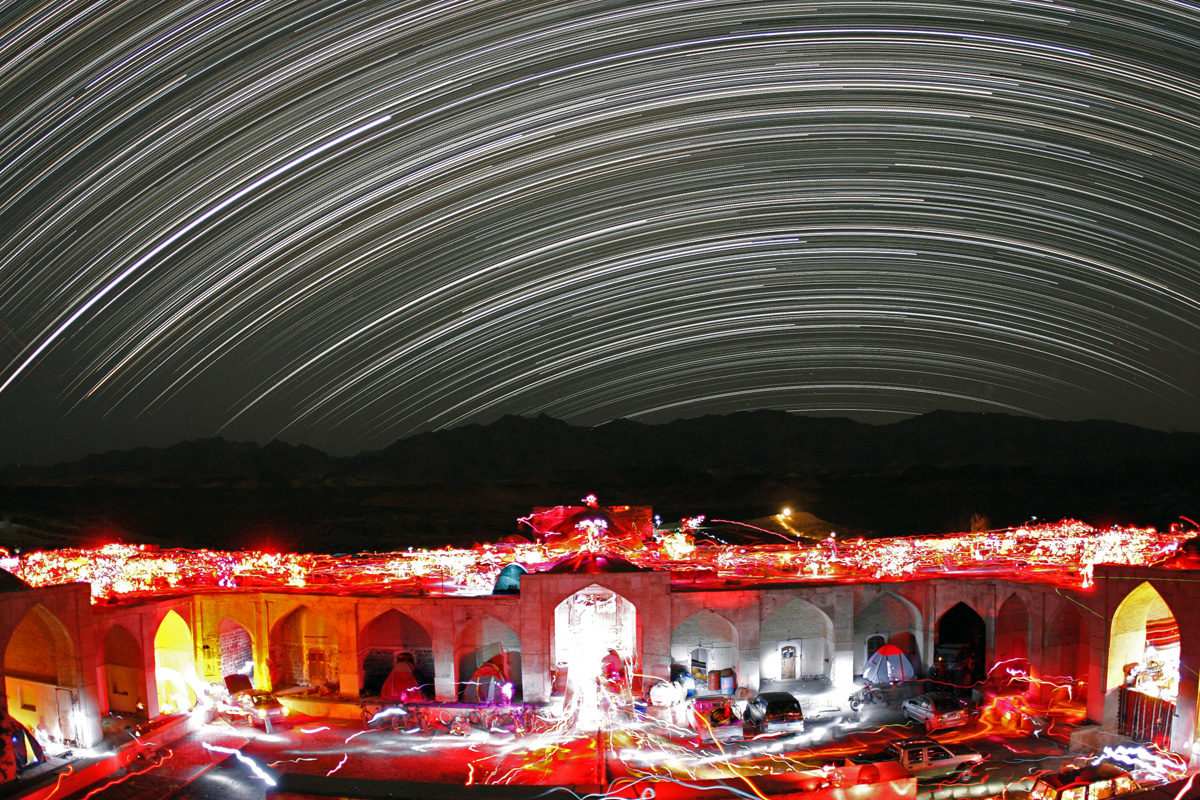This week in the UK Stargazing Live is showing on BBC2. I’ve already posted here and here on the glorious beauty of stars and comets in Iran. But I thought it would be good to again highlight the long tradition of astronomy in Iran.

Here is a Seljuk bowl, with a central Sun- symbol roundel surrounded by six medallions representing the Moon and the planets. Mercury (al-cutarid) is a young man writing on a scroll of paper; Venus (al-zuhara) a female musician playing an instrument. Mars (al-mirrikh) is a warrior, holding a sword and a severed head; while Jupiter (al-mushtari) is a sage or a judge, wearing a turban. Then the Sun (al-shams) and the Moon (al-qamar) are human figures holding a sun disk and a crescent. The image of Saturn (al-zuhal) was drawn from Indian sources, and the planet is often described as a dark-skinned man with a long white beard.
Similar images can be seen on the seventeenth century astronomical clock dial on display in the V&A – Saturn there (at 12 o’clock) is a multi-armed figure, like a Hindu deity. The V&A dial is truly multicultural – it also includes images of men using scientific instruments to take readings – and a ‘Zodiac Man: a European motif based on the idea that the signs of the zodiac ruled different parts of the body.
Since then, things continue to move on. Astronomical observation is now a popular pastime in Iran. Here are 200 astronomers, before a Messier Marathon.

This is an attempt to see, in one night, as many as possible of the 110 bright deep sky objects (galaxies, nebulae and star clusters) catalogued by the French astronomer Charles Messier during the late 18th century. This attempt was at the Qasr Bahram, the royal caravanserai of Shah Abbas in the Dasht e Kavir.

This week, I did the posting early – and now am late with letting you know about it! Sorry!
Next Saturday, 17 Jan, the Iran Heritage Foundation have organised a symposium on the Natural Heritage of Iran – on water, air, and forests, as well as wildlife. I think there are still tickets available.
I’m especially interested in water and cheetahs (the cheetah are a top predator and therefore a good indicator of a well-managed environment).
But in this week’s posting, I wanted to highlight something in the environment that cant be destroyed by human activity: stars. Light pollution is much lower in Iran than Europe and the stars – especially around Kirman – are truly scrumptious. No surprise then, about the long Iranian tradition of astronomy – and star-related objects.
Hope to see some of you at the IHF symposium!
Best wishes
Caroline
Thank you, Caroline. And the Seljuk bowl, sun at the center — is this Ms. Sun, khanom khorshid. If this is the sun as female, do you know when and where this feminine sun-symbol originated?
With all good wishes for 2014, Barney R